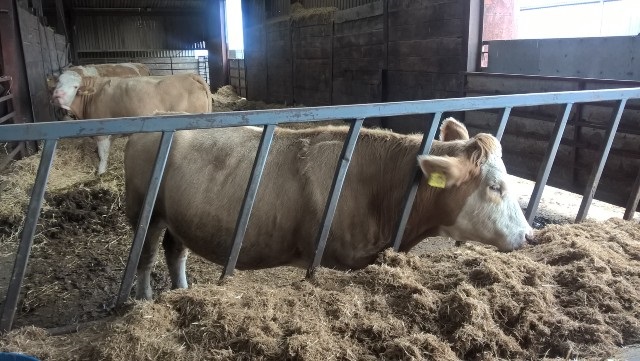Assessing Your Winter Growing Ration
23 December 2019As we move further into December, now is a good time to check your growing rations and how animals are performing. To do this, having a set of weigh scales on farm is invaluable. This lets you monitor average liveweight gains, allowing you to assess the ration and make any necessary adjustments. It also ensures that animals sent to the abattoir are at the optimum weight, reducing the risk of receiving overweight penalties.
The most important factor of achieving high liveweight gain is ensuring a high energy density of the ration. Another important factor is protein and the level of concentrate supplementation will depend on the basal forage of the ration. Therefore, it is vital to analyse the forage, this is not an expensive process and in the long run will save you money by improving animal performance, if it is used to formulate rations accordingly.
The table below shows 3 different scenarios, on poorer quality silage there is around 1.5kg more concentrate required compared with average quality silage to achieve the same level of daily liveweight gain. However, in scenario 3 it shows the outcome if you were to assume you have silage of average quality but it is actually poor quality. This compromises animal performance resulting in a higher cost per kg of liveweight gain. Cattle then need to be kept for longer, or alternatively sold at lighter weights, either way resulting in a reduced margin.
| Scenario | 1 | 2 | 3 |
|---|---|---|---|
| Average silage, 0.8kg DLWG | Poor silage, 0.8kg DLWG | Assumed average but actually poor, 0.4kg DLWG | |
| Grass silage | Ad-lib | Ad-lib | Ad-lib |
| Concentrates (incl minerals) | 2.5 | 4 | 2.5 |
| Cost per kg of gain | £1.40 | £1.80 | £2.60 |
Based on silage at £25/t and concentrates at £250/t
Practical tips to assess ration:
- Analyse forage. As the table above suggests never assume the silage quality. A small upfront cost will save you £££ in the long run!
- Weigh cattle; is the ration achieving the performance you have rationed for.
- Check the dung. This is a good indicator of how the ration is being digested by the animal.
- For growing cattle aim for a minimum 11-12% crude protein (CP) in the overall ration. On intensive straw based ration it should be a minimum of 13% CP (including straw).
- On silage based rations ensure roughage makes up a minimum of 30% dry matter intake (DMI) or on intensive straw should make up 12% DMI to maintain rumen function and promote saliva production.
- Keep feed in trough fresh, don’t allow stale material to build up.
- Check the minerals in the ration – are they tailored to the type of ration being fed e.g. Forage based vs straw. And how are they being supplemented (remember too much can be as detrimental as too little).
Mary Young, mary.young@sac.co.uk
Sign up to the FAS newsletter
Receive updates on news, events and publications from Scotland’s Farm Advisory Service

